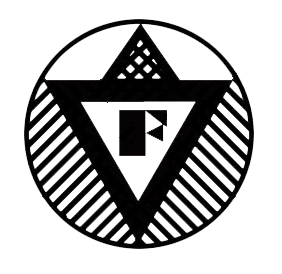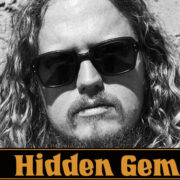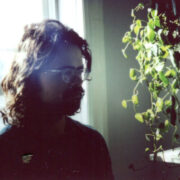Zachary Cale on Peter Laughner & Friends – “Take The Guitar Player For A Ride” 

I’ll admit, I’ve been lax in getting some Hidden Gems to the site, but there are still plenty of excellent recommendations in the works. On Zachary Cale’s latest LP, Cale lays out motel loneliness, Highway hypnosis, solitary meditations, dark secrets, and darker nights. Shades of Dylan’s Infidels, or contemporaries The War On Drugs, Steve Gunn, and Phosphorescent color the corners of Skywriting, but Cale’s carving out his own melancholy travelers’ path. But there’s always been a rougher edge below the surface. Cale dives into an obscurity that helped shape him. Check out him peeling back the layers of Peter Laughner below.
“Hearing Peter Laughner for the first time marked a shift in my own musical story,” recalls Cale. “It made me want to make art and I suppose that’s the highest compliment you can pay an artist. That voice beamed into my head and seemed to say “Hey kid, you can do this too. You can write hundreds and hundreds of songs. You can make it your life.” I burned a copy of my friend’s burned copy of a CD-R and proceeded to wear the thing out until it got discolored and distorted after years of use.”
“Oh yeah… I forgot to mention what record I’m talking about. It’s called Take The Guitar Player For A Ride.”

“It’s not really an album, not some lost classic or a one off obscure songwriter record by a major label reject, it’s a compilation of songs taken from Peter’s vast archive of home recordings. Not having the fortune of owning an actual copy I didn’t realize until later that the artist name for the record is listed somewhat humbly as Peter Laughner & Friends. It was released on the Tim/Kerr label in 1993.”
“I was 22, and in my last year of college with absolutely no prospects or plan for the future. I had been keeping busy the past 5 years in a number of basement bands during my stay in Olympia, WA. The last group I was in was called Counterfeit Monsters. We were equal parts proto-punk and post-punk (I think we skipped straight punk). One of our big influences was Pere Ubu, a Cleveland band of which Peter Laughner was a founding member. (though at the time I don’t think I knew the names of the people in the band aside from David Thomas the lead singer). After one miserable west coast tour to L.A. and back our band split; I got evicted from the house I was living in, another member left town, and another’s house burned down. It didn’t take a psychic to tell me that my time in that town had reached its unceremonious end. That last tumultuous year in Olympia was when I first heard Laughner. Soon after I packed a suitcase and a guitar and moved to NYC. In a few short months I would begin recording what became my first solo album.”
“Hearing a song or album you love that you haven’t heard in a while is a form of time travel for better or worse. Given my life changes at the time, and Peter’s songs being the soundtrack, this record has burned a permanent little hole in my soul. There’s a stark desolation to the record; the classic lone bluesman archetype, up all night, cigarette in the headstock, bottle of booze close at hand, singing to themselves. Most of the songs are just Peter playing solo on an acoustic guitar, sometimes with an upright bass accompaniment, a few others are audience tapes of him with a full electric band playing live in an under attended bar. It’s not an album but it plays like one. He didn’t live long enough to make a studio record. He passed away at the age of 24 after featuring as a side man and a frontman in a number of Cleveland groups in the early to mid 70s. He recorded himself frequently at home with just his guitar and that’s what most of his known recordings are taken from. Covered in tape hiss the record goes up and down in fidelity not unlike hearing a scratchy 45 of a pre-war blues.”
“There was a change in my attitude and ambition after hearing Peter. I had as of yet to fully embrace the solo troubadour aesthetic. I had been toying with it in Olympia but was always too shy to really go for it. Playing solo acoustic was a terrifying prospect! I was already heavily into Elliott Smith but aside from him I hadn’t yet explored the world of roots, folk and blues music. I hadn’t peeled the onion with Dylan yet, hadn’t discovered Townes yet, was a bit too rock n roll minded to dive into Cohen’s catalog. The only folkie I could really stand at that time was Neil Young, and Neil’s folk is only one side of him. At the time I was mostly playing loud discordant music in small DIY spaces so the quieter stuff I was writing was more of a thing I did in private,” admits Cale.
“What lit the fire under me with Laughner was his spirit. I identified with his raw nerve energy more than the boomer icons my parents played as a kid. He was a rock guy playing his own lonely blues. His guitar playing is visceral yet highly melodic, the voicings blend the country blues of Skip James with the modal chords of Richard Thompson, but all spun through his unhinged delivery that’s more indebted to Lou Reed. There’s no doubt that Lou was his idol, some say that’s what killed him. He took what Lou did with guitar and synthesized it with other greats like Keith Richards, Tom Verlaine, and Robert Johnson. There’s even an echo of Fahey’s Blind Joe Death on the record’s lone instrumental simply titled “Lullaby.’”
“His voice is cutting and aggressive but full of soul and melodic grace. It’s ragged in the best way. It feels like it hurts, and you believe it, but not in some cloying overly emotive way. There’s a starry-eyed eloquence to his delivery. His songs are dreamlike. They don’t always make literal or narrative sense but they paint a picture that feels real. The life he sings about seems like his own. The longing, and the ache dig into you.”
“Lines like this one from his classic “Amphetamine”.
“I took the kid down to the harbor inn but the cops they wouldn’t let him in, he’s getting used to being turned away, he’s gonna show them some fine day, and you’re so easily excited, we were having a party but we weren’t invited.” feel cut from scenes from his life.”
“Colorful barfly scenes abound in his ode to drinking after hours in “Down at the Bar”
“They said Jimmy came from New Orleans with a scar on his cheek and his future in his jeans, he started hanging out at the bar telling everybody he’s an ex-marine, now which one of you sugar daddies wanna trip with a boy that’s clean?”
“Dylan is an obvious touchstone for him, as well as Van Morrison. I think most people would agree on first hearing Laughner that the Dylan comparison might be the first thing to jump to as his verse writing is full of images that flash by at a hurried pace. Though the more I dug into Laughner’s world I started hearing more obscure lyrical influences. The fact that two of the songs on the record are titled “Baudelaire” and “Sylvia Plath” tells you all you need to know.”
“Here’s a verse I especially love from “Baudelaire”
“Here comes the night to fill my glass just one more time, while all the lovely ladies get up and adjourn to the show, and my head is so anointed with the blood and the wine, that I almost seem to know, of all the secrets down on the holy street where the vagrants come down and go, and all the secrets in the eyes of cats and other vagrant lovers where the cruel waters flow”
“Like most sad boy folkies his romanticism for personal destruction is felt in just about every song, though it never feels like a put on. I’ve read everything there is to read about him and the truth of it is Peter seems like he was a genuine fuck up. (The best writing on him is Adele Bertei’s amazing memoir Peter and The Wolves and the Lester Bangs essay entitled Peter Laugher.) He got kicked out of the bands he started or quit when he got bored. He was a very restless dude. I imagine he was intolerable to be in a band with but at the same time he outplayed and outperformed everyone, and most of the musicians that knew him seem to be equally annoyed and in awe of him, but those personality traits just remind me of what it’s like to be young. It brings me back to my own wild days of bad relationships and band break ups. Peter’s songs reflect that time for me: the pangs and reality of becoming an adult. Growing out of the old scene and striving for something new.”
“When I was 12 years of age Nirvana was my favorite band. Kurt was similar to Laughner to me as he was such an enthusiastic fan of music. His covers of the Meat Puppets, The Wipers and The Vaselines, his gushing over The Raincoats in interviews and even wearing a Daniel Johnston T shirt to the MTV music awards were signposts leading somewhere, it made you want to dive deeper. Dylan is the same. Once I fell in love with his oeuvre it became all about Harry Smith and the Anthology of Folk Music, it was Johnny Cash, Hank Williams, Fred Neil, etc. When I got into John Fahey another world opened up. Mississippi John Hurt, Elizabeth Cotten, Skip James, Bola Sete, Sandy Bull, Stockhausen, etc. Peter Laughner is like that to me. He was such a fan. He connected a lot of dots for me.”
“The songs he chose to play by others give insight to what inspired him. The electric live version of Richard Thompson’s “Calvary Cross” is the first version of the song I ever heard. Originally I didn’t find the song that compelling until I heard the original Richard and Linda version. Now I look back to Laughner’s version knowing the song for the classic that it is and find that the guitar pyrotechnics and gut wrenching vocal that Laughner brings to it cuts right to the heart of the song. The recent Peter Laughner box set issued on Smog Veil dives even deeper into Laughner’s repertoire of cover tunes. It’s clear that he was a student of rock history, one that spent hours studying the sonic architecture of the Velvet Underground, the lyrical innovation of Dylan, and the guitar mastery of Robert Johnson. Other covers included on Take The Guitar Player For A Ride are a ramshackle version of Brian Eno’s “Baby’s On Fire” and a drunken early AM version of Robert Johnson’s immortal “Me and the Devil Blues”, which I’ve been told was on the tape he recorded the night he shuffled off this mortal coil.”
“Although he seemed destined to burn out, it’s wild to think of what Peter would’ve done had he lived. I go back to his music often and still marvel at the talent he had at such a young age. His guitar playing still floors me, and the breadth of his writing is still something to work towards. He was a real one.”
I’ll cap this off with this verse from “Cinderella Backstreet”.
“I tried to teach naivete to kids brought up on TV, I tried hard to smile, got hung up in style, it seems they saw right through me, and you know me and Ricky were talking in between all the noise, smoke and the jive, and I said playing those blues that you learned from the English dudes it doesn’t really satisfy, and I said to him I’m gonna walk down in the alley, down where the light shines so very dimly, where the alley cat walks on silent padded feet with Miss Cinderella Backstreet.”
This is an excellent recommendation for one of the heroes of the fringe, and Cale makes the case for the necessity of some form of Laughner in your life. While the original editions of Take The Guitar Player For A Ride are rather hard to come by these days, that box set that Cale mentioned fills in a few holes here. Discogs can help out with the original, but both are an excellent sketch of a guitar legend that was erased too soon.
Support the artist. Buy it HERE (box set)








